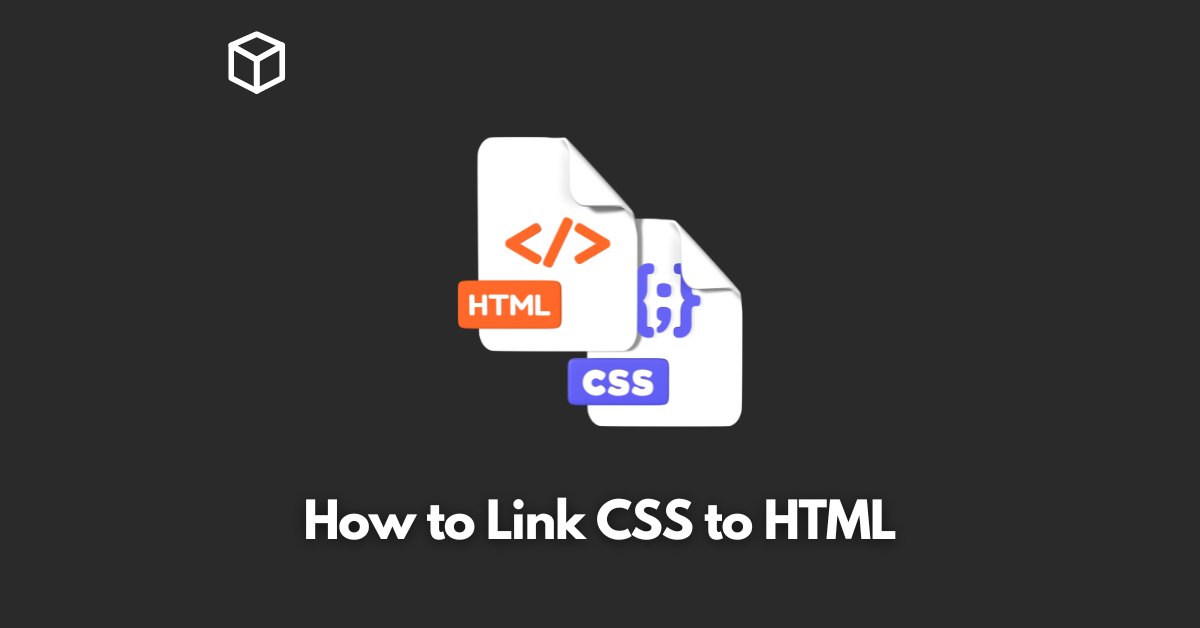CSS and HTML are the building blocks of web development.
CSS, or Cascading Style Sheets, is a language used to style and layout web pages, while HTML, or Hypertext Markup Language, is used to structure and organize the content of web pages.
Together, they create the visual and structural elements of a website.
Linking CSS to HTML is essential for creating a cohesive and visually appealing website.
Without linking the two languages, a website will be plain and unorganized.
In this CSS tutorials, we will guide you through the process of linking CSS to HTML, from understanding the basics to troubleshooting common mistakes.
Understanding the Basics
Before we dive into linking CSS to HTML, it’s important to understand the structure of each language.
A CSS file is made up of selectors and declarations.
Selectors are used to select specific HTML elements to apply styles to, while declarations are the actual styles being applied.
For example, a selector may be a specific class or id, while a declaration may be the color or font-size being applied to that class or id.
An HTML file is made up of elements, which are used to structure and organize the content of a web page.
Elements are denoted by tags, such as <p> for a paragraph or <h1> for a heading.
When linking CSS to HTML, the styles in the CSS file are applied to the corresponding elements in the HTML file.
This creates a cohesive and visually appealing website.
Linking CSS to HTML
There are three main methods for linking CSS to HTML: external linking, internal linking, and inline linking.
External linking method
The first method is external linking, which involves creating a separate CSS file and linking it to an HTML file.
To create a CSS file, simply create a new document and save it with the file extension .css.
Then, in the HTML file, use the link tag to link the CSS file to the HTML file.
This method is preferred for larger projects and allows for easy updating and maintenance of the styles.
- Creating a CSS file
- Linking the CSS file to an HTML file
- Example of external linking:
<link href="styles.css" rel="stylesheet">
Internal linking method
The second method is internal linking, which involves adding a stylesheet directly to an HTML file.
This can be done using the style tag, which should be placed within the head of the HTML document.
This method is best for small projects or for testing purposes.
- Adding a CSS stylesheet to an HTML file
- Example of internal linking:
<head>
<style>
/* CSS styles go here */
</style>
</head>Inline linking method
The third method is inline linking, which involves adding CSS styles directly to HTML elements. This is done by using the style attribute within an HTML element.
This method is not recommended for larger projects as it can make the code difficult to maintain and update.
- Adding CSS styles directly to HTML elements
- Pros and cons of inline linking
- Example of inline linking:
<p style="color: blue;">This is a blue paragraph.</p>
Common mistakes and troubleshooting
When linking CSS to HTML, there are a few common mistakes that can occur.
One common mistake is not properly linking the CSS file to the HTML file, resulting in the styles not being applied.
Another mistake is using incorrect selectors or declarations in the CSS file, causing unexpected results on the web page.
To troubleshoot these mistakes, you can use tools such as browser developer tools to inspect the HTML and CSS code, and see where the errors may be occurring.
Additionally, checking the file paths and ensuring that they are correct can also help fix linking issues.
Conclusion
In this blog post, we have covered the basics of linking CSS to HTML and the three main methods of linking: external linking, internal linking, and inline linking.
We also discussed common mistakes that can occur and how to troubleshoot them.
Remember, linking CSS to HTML is an essential step in creating a cohesive and visually appealing website.
As a next step, we recommend experimenting with linking CSS to HTML on your own and exploring other resources such as online tutorials and forums for further assistance.
With practice and understanding, you’ll be able to create beautiful and functional websites.




